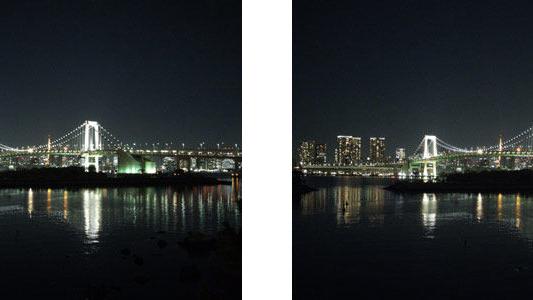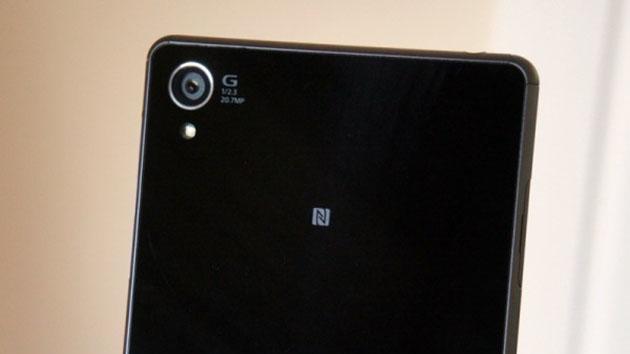ExmorRS
Latest

Sony's new smartphone camera sensor is smaller and cheaper
At this point, Sony's more famous for the components that it makes for other people's devices than their own phones. It's certainly the case for its image sensors, which are now used by Apple, Huawei and, if the rumors are to be believed, Samsung. Just in time for MWC, the firm is releasing a new Exmor RS, the IMX318, that's likely to pop up in plenty more devices in the next year or so. It's a 1/2.6-inch stacked CMOS that has a maximum resolution of 22.5-megapixels and a hybrid autofocus that'll focus in as little as 0.03 seconds. The sensor is a lot smaller than its predecessors, but now includes three-axis, electronic image stabilization that could do away with bulky OIS lenses.

Sony's new sensor could bring DSLR-like autofocus to phones
While there's speculation that multi-sensor phone cameras are the next big thing, Sony has just launched a sensor that will likely make its smartphone cameras better soon. The latest Exmor RS IMX230 is a so-called stacked CMOS sensor that squeezes an effective 21-megapixels into a 1/2.4-inch sized form factor. The killer feature, however, is built-in 192-point phase-detection autofocus, which will keep fast-moving subjects sharp. The new chip also has integrated HDR for high-res stills and 4K video to save shots that are overly backlit or in shadow (see the image below).

GEAK unveils Eye and Mars smartphones with 13MP cameras, budget prices
GEAK may be focusing its attention on wearable tech like the Ring and Watch, but it still has a pair of new offerings for those who like old-fashioned smartphones: meet the 5-inch Eye and 5.8-inch Mars. Both are tailored to photo junkies with 13MP, backside-illuminated rear cameras as well as strong front cameras that shoot at 8MP (Eye) and 2MP (Mars). Differences between the handsets revolve mostly around performance and screen size. The Eye keeps things modest with a 720p IPS display, a quad-core MediaTek MT6589, HSPA+ data, 1GB of RAM and 16GB of storage. Spring for the extra-large Mars and you'll upgrade to a 1080p IPS LCD, a Snapdragon 600 and 2GB of RAM. Either way, you won't be paying a lot for the imaging prowess -- when pre-orders start on June 25th, GEAK will ask ¥1,999 ($326) off-contract for the Eye and ¥2,999 ($490) for the Mars. Just don't expect either to leave China when there's no word of international plans.

Mystery 13-inch Sony Ultrabook slider pops up in horribly grainy YouTube video
We've already seen Sony take a stab at a Windows 8 hybrid in the form of the VAIO Duo 11, and now a clip has appeared on YouTube apparently showing an unannounced 13-inch Ultrabook slider with a 1080p Triluminos touchscreen display. Allegedly, the video is being used for training at UK retail chain Dixons, and in addition to repeatedly collapsing and opening the slim white and silver unit, the demonstrator plays around with a stylus in Microsoft's Fresh Paint. There are a couple of text overlays near the end of clip, highlighting the "SurfSlider design," backlit keyboard, ClearAudio+ and ActiveSleep tech, as well as its 10 hours of battery life. NFC is also said to be on board, along with an 8-megapixel camera with Exmor RS sensor, Intel Core i5 processor, 4GB RAM and 128GB SSD. The incredibly grainy video is embedded after the break, and although we can't verify its authenticity, we also can't ally it to any known product. Update: There's also a handful of press images -- we've included one after the break too. [Thanks, Aiga and Christopher]

Sony Xperia L: a budget Android device with a focus on imaging and style
The days of the new Sony Mobile are now long past. Two years in, and the company appears to have hit a stride with its smartphone portfolio, churning out new Xperias on a consistent basis. And today is no different with the unveiling of the Xperia L, a mid- to low-end effort that places a heavy emphasis on the camera experience. Carrying on the Arc's legacy, this 4.3-inch handset packs an FWVGA display, dual-core 1GHz Qualcomm Snapdragon S4, 1,700mAh battery, 8GB of internal storage (expandable via microSD), NFC and an 8-megapixel rear shooter with Exmor RS sensor into a conspicuously curved body rounded off with that signature Xperia power key. Though it lacks the greater resolution and screen size of its 720p sibling the SP, this more budget-friendly device does enjoy an exclusive perk: HDR stills and video. A feature Sony's included to make the L an attractive point-and-shoot option for budget-minded consumers concerned with style points and not LTE or raw performance. Unsurprisingly, it comes pre-loaded with a trio of Sony's own media apps -- Walkman, Movies and Album -- a precedent it set at IFA last year. %Gallery-183057%

NTT DoCoMo suggests Sony Xperia Tablet Z in the works, will get early reveal in Japan later this month
Sony had no shortage of devices to show off at CES last week, but there might be more on the way -- before Mobile World Congress has even begun. NTT DoCoMo has let slip that it'll be showing off an "Xperia Tablet Z" alongside the previously announced Xperia Z at a preview event next week. The page in question has already been pulled, and may only be an announcement mishap -- if there was an L in there, we'd reconsider -- however, it's highly likely the phone network knows exactly what's in store from the electronics maker. We've also heard from our sources that Sony's new Exmor RS camera sensor will make its way into a new tablet, although the exact sensor specifications are likely to be different from the 2013 Xperia devices seen at CES. A slightly suspicious spec list has also found its way on to Twitter, suggesting a familiar 10.1-inch form factor and a 1.5GHz quad-core processor, but we're waiting to hear more directly from the Japanese carrier (or perhaps Sony) sometime next week.

Sony Xperia ZL hands-on: an alternate 5-inch 1080p, quad-core take on 'premium'
You can't fault Sony for trying. After announcing its renewed focus on mobile back in 2012, the company's consistently issued thoughtful hardware for the global marketplace. But its collective efforts have yet to spark the "emotional" storm company CEO Kaz Hirai seems to be striving for. Well, if the smiles on our faces are any indication, Sony may have a bonafide hit on its hands with the Xperia ZL. Introduced officially at its CES 2013 event, the 5-inch Android Jelly Bean handset bears nigh identical specs to its larger, more "premium" big brother: the Xperia Z. With a scratch-resistant 1080p TFT Reality Display powered by Mobile BRAVIA Engine 2, 1.5GHz quad-core Snapdragon S4 Pro and 13-megapixel rear camera with Exmor RS sensor, the ZL sits comfortably in the high-end range. We spent a bit of time exploring the device and gauging its ability to evoke kando -- that Japanese term for an emotional reaction spurred by quality experiences -- so join us after the break to see how it fares and meter our level of excitement. Follow all the latest CES 2013 news at our event hub.

Oppo previews sample shots taken with Find 5's Sony-made Exmor RS sensor
Sony pulled the plug on the original specs for its next-gen Exmor RS sensor, pushing a rollout for those modules into the new year. So while that move, made for quality control purposes, guarantees that a new batch of Xperias outfitted with the tech won't appear until 2013 at the earliest, imaging fanatics curious for a preview can get a sneak peek courtesy of Oppo. Baked into the Chinese manufacturer's newly announced Find 5 -- a quad-core S4 Pro Android Jelly Bean handset with a 5-inch 1080p display -- is the top shelf 13-megapixel version of Sony's sensor tech. Oppo's provided a few curated snapshots taken with the camera on its site and, as you'll see, the resulting images are rich with color and exhibit a fine level of detail. We'll reserve judgement until we can get our hands on a review unit for extensive testing. Until then, feast your eyes on the samples at the source below.

Sony's stacked Exmor RS phone camera sensors detuned over quality worries
Sony would still like you to get excited about its upcoming Exmor RS stacked CMOS image sensors -- just not too excited. Both the 8-megapixel IMX134 and 13-megapixel IMX135 are scaling back from their original RGBW (red, green, blue, white) coding to an ordinary RGB over concerns that they aren't meeting Sony's "image quality standards" as originally designed. Consequently, either sensor will be less sensitive to light and diminish some of that high dynamic range magic. The company also doesn't want to get our hopes up for a quick arrival on shelves and clarifies that there's a phased launch starting in January. Mobile shutterbugs may be crestfallen knowing that Sony won't have the best possible camera sensor in future Xperia phones, but the honesty at least guarantees that the company gets a timely return on its $994 million investment.

Sony announces new Exmor RS cameraphone sensor: upgraded signal processing, HDR video recording
That camera sensor in your smartphone is very likely to be a Sony-made module which means it's worth keeping an eye on the company's latest sensor developments. Your next phone could be packing one of its latest Exmor RS camera modules, a stacked CMOS image sensor that's currently being readied for future smartphones and tablets. At the moment, three components fall under the new RS label, with two eight-megapixel sensors (one with new camera signal processing tech) and a top-drawer 13-megapixel module. Alongside the new sensors, Sony's crafted new f/2.2 lenses alongside a refreshed auto-focus module and all of them will be capable of HDR video recording. The company's now working on improving sensor behavior, image quality and keeping it all tiny enough for that next pricey phone contract. The first products are expected to arrive in October, so we may not see it in Sony's very next tablet, but development could be done in time for next year's effort -- and help validate the manufacturer's imaging investment.





